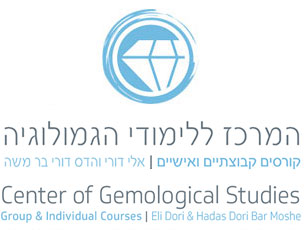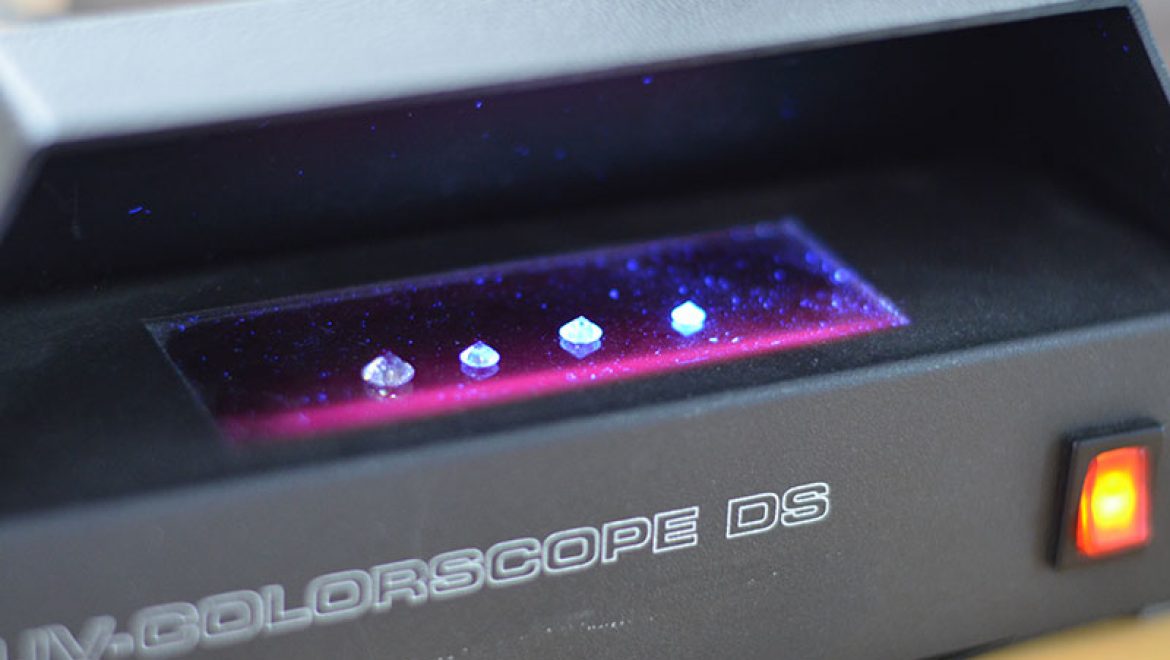Ffluorescent diamonds
The diamonds develop in time ranges that differ from 900 million years up to 3 billion years. Throughout the developing process, there are changes in the atomically structure in part of the diamonds. Therefore about 30% of natural diamonds glow – usually in a bluish color, when they are under light that consists of ultra violet rays in long waves (such as sunshine).
The fluorescence of a diamond can appear in 5 different hues of colors:
- Blue – the most common
- Yellow– usually if the diamond has a yellow fluorescence it probably has clouds.
- Green
- Orange
- White
The fluorescence of a diamond has various intensities:
- Very strong
- Strong
- Medium
- Faint
- None – The stone is not fluorescence
The fluorescence of a diamond can have 2 different effects on the diamond, especially when it appears in a very strong or strong level:
The color of the stone:
Sometimes a stone which has a very strong to strong fluorescence will appear to be a better color from the crown than from the pavilion. This is considered to be a positive effect with the lower colors, especially I, J and below, because it makes the color look better from the crown. In the higher colors it is considered to be a negative effect because with the higher grades the color should be stable.
A very strong to strong fluorescence considered to be negative and will lower the price significantly.
If there is a difference of one color grade between the crown and the pavilion, then the stone should be classified with the lower color grade.
If there is a difference of two color grades between the crown and the pavilion, the color grade will be the average of the two colors.

The appearance of the stone:
Sometimes a stone that has very strong to strong fluorescence can look cloudy and lifeless. This will lower her price significantly.
*** Commercially, most of the diamonds buyers, don’t want to buy fluorescence diamonds.
How to Check for Fluorescence Especially in V. Strong & Strong:
All the methods are done under light that consist ultra violet rays in long waves.
- Under the loupe – if you see bluish light coming out of the stone this is probably fluorescence.
- You can place the stone with the crown facing downwards on a black background. This will emphasize the bluish light that comes from the pavilion.
- While checking the color in a color paper if the culet looks whiter than the rest of the stone it is probably fluorescent.
- You can place the stone inside the fluorescence lamp; if the stone becomes whitish and pale it is fluorescent.
- The best and easiest way is to check with fluorescent equipment. Place the stone onto what is called a UV-Colorscope or UV Lamp. If the stone glows (you will notice it immediately), then it is fluorescent. You will also notice the specific color of the fluorescence.
Would you like to learn more about diamonds? You can approach the Center of Gemological Studies and register to the most prestige, affluent and respected gemology course in the Israeli Diamond Center.
Hadas Dori Bar Moshe also lectures about diamonds in her lecture: The Secrets of the Diamonds.


